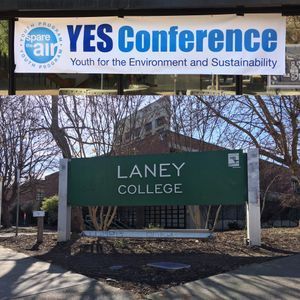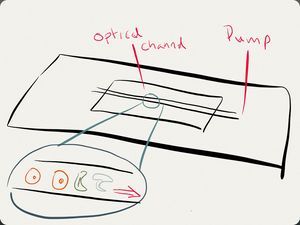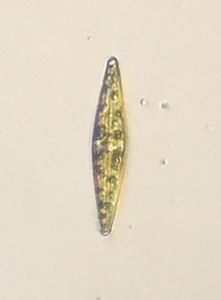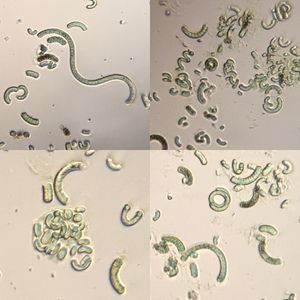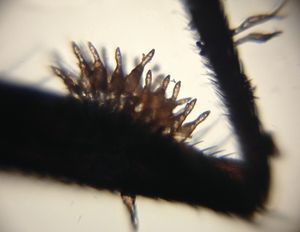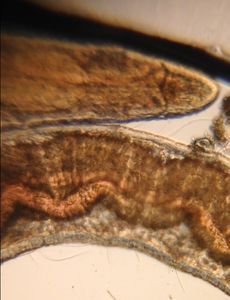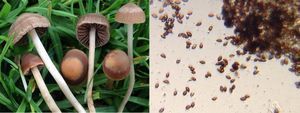Protozoan parasitizing a mosquito larva ?
 May 18, 2016 • 3:00 AM UTC
May 18, 2016 • 3:00 AM UTC United States
United States 140x Magnification
140x Magnification Microorganisms
Microorganisms
damontighe
I currently work as a Curriculum and Training Specialist at Bio-Rad laboratories and help teachers incorporate more biotechnology into their classroom. I worked in DNA sequencing for years including the Human Genome Project and single cell genomics (termite, cow, and other guts). I have a love of the outdoors that I spread to the public via Calnature.org. I enjoy backpacking, picking mushrooms and photography.
15posts
17comments
9locations

The Sierra Nevada of California right now is blooming. The hills are brushed in the purple, golds and yellows of the California floral palette and beneath the old firs massive bolete mushrooms are pushing up through the duff, nearly asking to find themselves on a dinner plate. Water is abundant and where it has pooled, a bloom of mosquitoes is brewing. A good friend from my Bozeman years asked me to shoot some video of the larvae with the Foldscope, which like many projects seems easy at first, but as per usual the devil is usually in the details. Below is the imagery and a questions they generated for me about the biology and then I’ll get into the technical notes on how to find larvae and how to image live ones.
Live mosquito larva (moving up abdomen to siphon that is at the surface of the water):
Live mosquito larva (moving up abdomen to siphon that is at the surface of the water):
Dead mosquito larva (starting at the head and then moving to the siphon and then back up the other side):
Still frame of anatomy of interest:

Video of the Vorticella (Thanks @Laksiyer for the ID) feeding. Video is slowed down 4X so that you can see the particles getting sucked in.
What the heck are those goblet shaped structures? I’ve looked at a couple general mosquito larva illustrations and images online and none seem to show this. I am wondering if this is some sort of parasite upon the larva? The general shape reminds me of zoosporangium of oomycota, but really I’m at a loss for what these structures are. I’m fairly sure they are not part of the regular anatomy of the mosquito larva. Does anyone have any ideas?
How to find mosquito larva: In the Sierra I’ve noticed an interesting trend, which is I don’t find a ton of mosquito larva in small puddles on the ground or in ponds/lakes. However, if you can find an old stump with water in it I almost always find larvae in there. Ponds that have lots of rotting logs however do seem to have larvae. Either way, get close to some water and look at the surface for little bobbing worm shaped critters that shuttle away from the surface as you approach and then return to the surface in a short period of time. I found my larvae in a stump and took some home in a little tube:
How to find mosquito larva: In the Sierra I’ve noticed an interesting trend, which is I don’t find a ton of mosquito larva in small puddles on the ground or in ponds/lakes. However, if you can find an old stump with water in it I almost always find larvae in there. Ponds that have lots of rotting logs however do seem to have larvae. Either way, get close to some water and look at the surface for little bobbing worm shaped critters that shuttle away from the surface as you approach and then return to the surface in a short period of time. I found my larvae in a stump and took some home in a little tube:
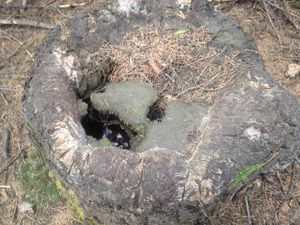
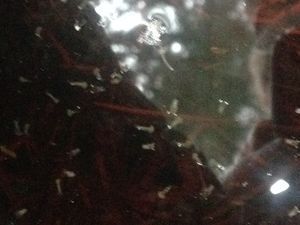
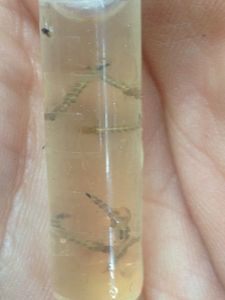
Anytime I’m out in the field looking for critters I use iNaturalist to make observations, because if I use my cell phone it automatically grabs my GPS coordinates and a time stamp, which gives me rich meta data around observations. I can always add things like microscopy to an observation once I get home. Also there are just a bunch of nice people on there that help me ID all of the stuff I don’t know. Here is the observation for these mosquito larvae: http://www.inaturalist.org/observations/3188258
How to image a live mosquito larvae: I quickly realized slapping a cover slip on a mosquito larvae would not work, because it is so big and with my focusing skill on the Foldscope it would quickly lead to death my crushing. I figured I wanted something that could have a well in it that I could push on without it crushing and was big enough to accommodate the larvae and its water. Using a coverslip, glass slide, nail polish and bits of rubberband I made the following well on a slide system:
How to image a live mosquito larvae: I quickly realized slapping a cover slip on a mosquito larvae would not work, because it is so big and with my focusing skill on the Foldscope it would quickly lead to death my crushing. I figured I wanted something that could have a well in it that I could push on without it crushing and was big enough to accommodate the larvae and its water. Using a coverslip, glass slide, nail polish and bits of rubberband I made the following well on a slide system:
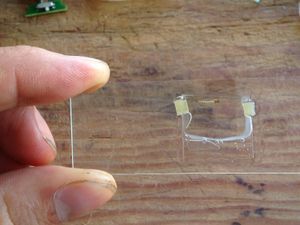
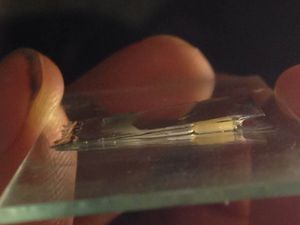
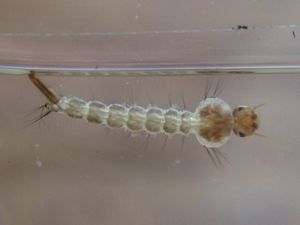
The trickiest part about building the well was building up the nail polish along the edge of the coverslip as it will sort of capillary action pull its way under the glass slide, so I found it easiest to put a few small beads on the edge of the coverslip, let them harden and then come back and add beads of nailpolish between those and this minimized how much of it spread out beneath the coverslip. The mosquito larvae seemed relatively “happy” in the glass mount and made it easier to image. The only trick I didn’t use that I wish I would have in retrospect was tossing the mosquito larvae and slide in the fridge for a bit to cool it down a bit as many of the first videos weren’t any good because it was flicking around to much. The mosquito larvae expired while I was at work, probably because most of its water evaporated, but this did make it easier to image! I used the magnetic mount for the Foldscope with my iphone5 and zoomed in a bit in video mode to get rid of the vignetting and used a desk lamp as my light source.
Sign in to commentNobody has commented yet... Share your thoughts with the author and start the discussion!
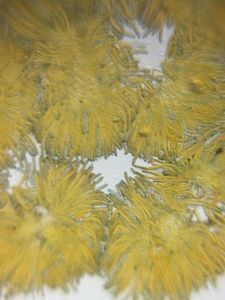
 0 Applause
0 Applause 0 Comments
0 Comments